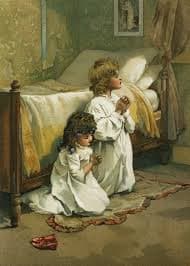Roberts and His Rules
If you’ve been to a business meeting at our church, odds are you’ve heard people talk about “making motions,” “seconding” this or that, or otherwise following a set of procedures that seems oddly formal—if not downright weird. This system for running meetings is known as “Robert’s Rules,” and I’ve found it to be typically assumed, seldom explained, and, often enough, poorly understood. Let’s try to clear that up, shall we?
What “Robert’s Rules” Are & Why We Use Them
Henry Martin Robert wrote the first edition of his book “Robert’s Rules of Order” in 1876. The idea was to have a clear system of agreed-upon guidelines for running meetings. Since then, they’ve been widely adopted by many organizations. Robert’s Rules are not the law, and there’s no legal requirement to use them, but they’ve been proven to generally be the best way to run a good meeting.
Robert’s Rules help us navigate between two priorities: 1) letting everyone have a voice, and 2) keeping things orderly and organized. Most of us have been in some sort of a meeting where everybody had something to say, but there were no guidelines on how to proceed, and we saw how quickly things fell apart. On the other hand, some of us have been in very tightly-organized meetings where it all ran very efficiently, but nobody had any opportunity to contribute at all. Robert’s Rules help a meeting have structure and give regular opportunity for people to participate in meaningful ways.
In a Baptist congregational church like ours, we believe that the members together are highest authority (under Christ) in our church, and yet we also recognize the role of the elders in providing shepherd-like oversight to the members. Robert’s Rules are a way to help us reflect that relationship in our meetings. The elders propose an agenda; the members can approve it or suggest changes. The elders introduce motions; the members vote on them and/or propose new motions of their own. The guidelines in Roberts Rules help direct our meetings as we seek to honour both the congregation’s authority and the elders’ oversight.
To help you wrap your heads around Robert’s Rules even just a bit more, you can check out a “cheat sheet” below which shows the different kinds of motions and procedures within Robert’s Rules. As you read the list, you’ll see some examples which will never (or at least should never) need to be used in our church setting. That’s a good reminder that, even though Robert’s Rules are a helpful tool, we ultimately look to the Holy Spirit to soften our hearts and give us the mind of Christ as we work alongside one another for His glory.
I Move That We Understand Motions
Let’s talk about the idea of a “motion,” one of the central concepts in Robert’s Rules. A motion is simply another word for a proposal. It can be a proposal to discuss something, decide something, consider something—anything at all really. “Motions” are not laws, and, if passed, are not fixed in stone. A motion can be modified before it’s voted on, or overturned by a subsequent motion.
Here’s a few ways that could happen. Let’s say, at a meeting, someone makes a motion that we paint the inside of the building red. Someone else seconds that motion, meaning it’s ready to be voted on. At that point, according to Robert’s Rules, anyone can make a secondary motion to adjust the primary motion. For example, someone else could stand up and say “I move that we amend the previous motion to say that we’ll paint the building green.” If that motion is seconded and voted on, then we’d all still need to vote on the first motion, which has now been modified to say “green” instead of “red.”
Any member can also move to postpone or extend discussion on a motion, or even send a motion to a committee for further study. Even if a motion is passed, a further motion can be made to reconsider that motion. (All of this is described on the “cheat sheet” below.) What this shows is that motions are not “the law of the Medes and Persians.” A motion is just a proposal—a proposal that can be changed, clarified, or overturned in the light of new information or fresh discussion.
Closing Thoughts
If you’re a member of our church, you have a important and influential voice in our life together, and our quarterly meetings are an important place for your voice to be heard. Please, we invite you to come and ask questions about things you don’t understand, make suggestions, and participate in the sacred decision-making process that was entrusted to us not by Henry Robert but by Christ Himself (Matthew 18:18-20).
Once in a while I’ve heard members say things like, “I didn’t necessarily agree with that decision, but I didn’t want to speak up or vote ‘no.’” That is so sad, but I get it—it’s easy to try and “read the room” and assume what everyone else is thinking, and then decide to stay quiet. But what if others are doing the same thing, just hoping that someone else will speak up and give voice to their hesitations? And what if that person is you?
So please, play your part! That includes more than just participating at meetings, even though that’s a great place to begin.






